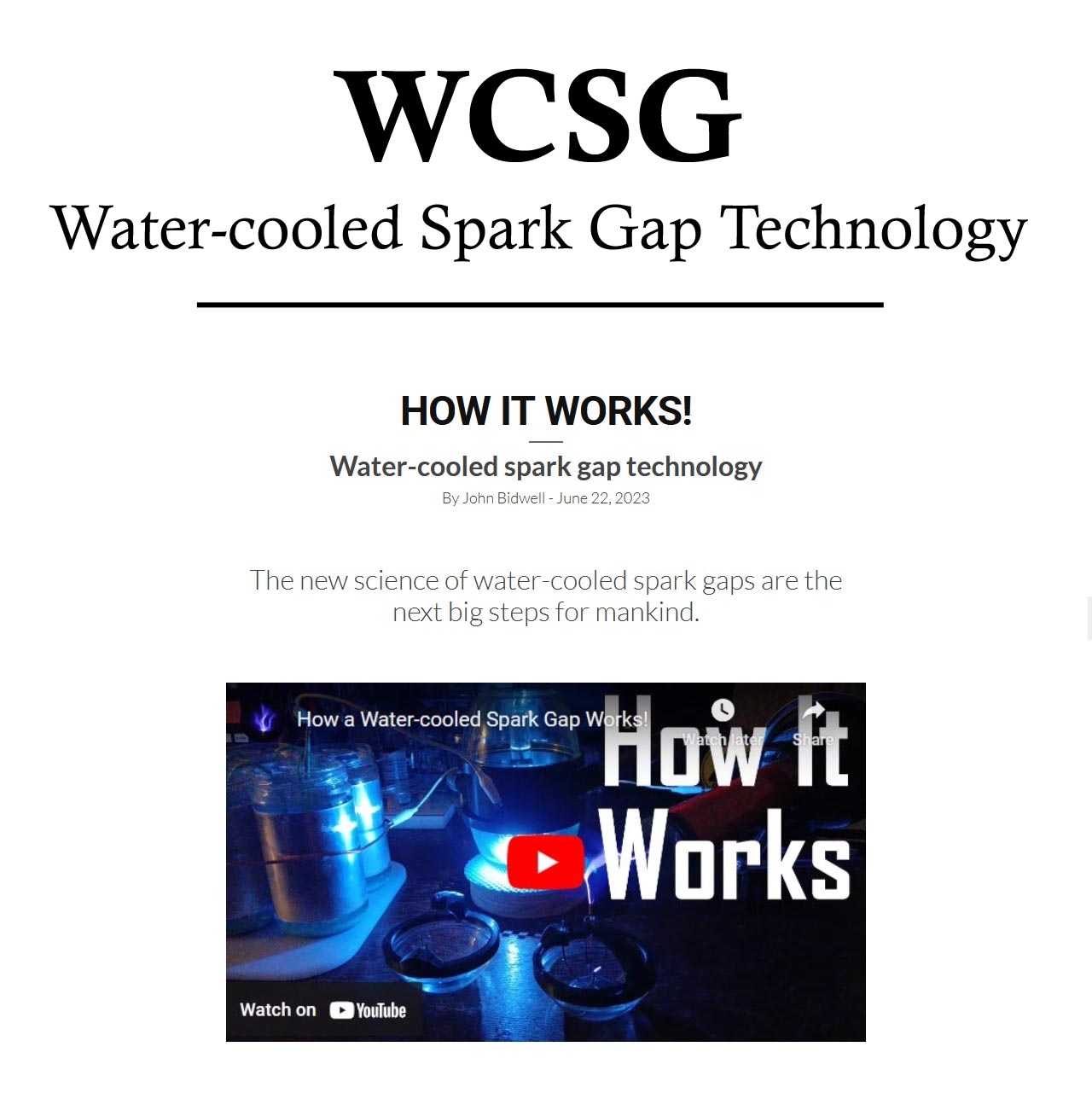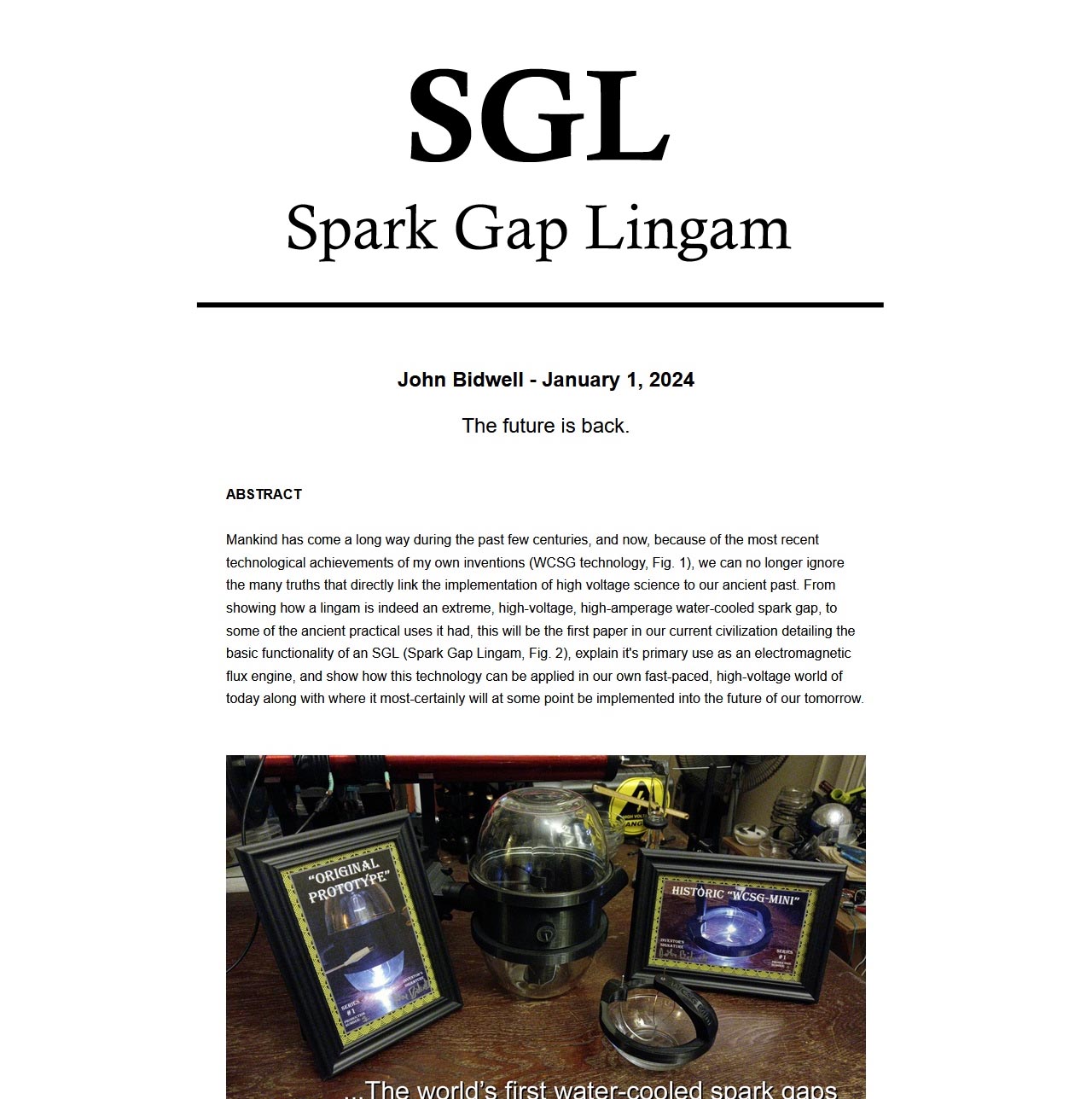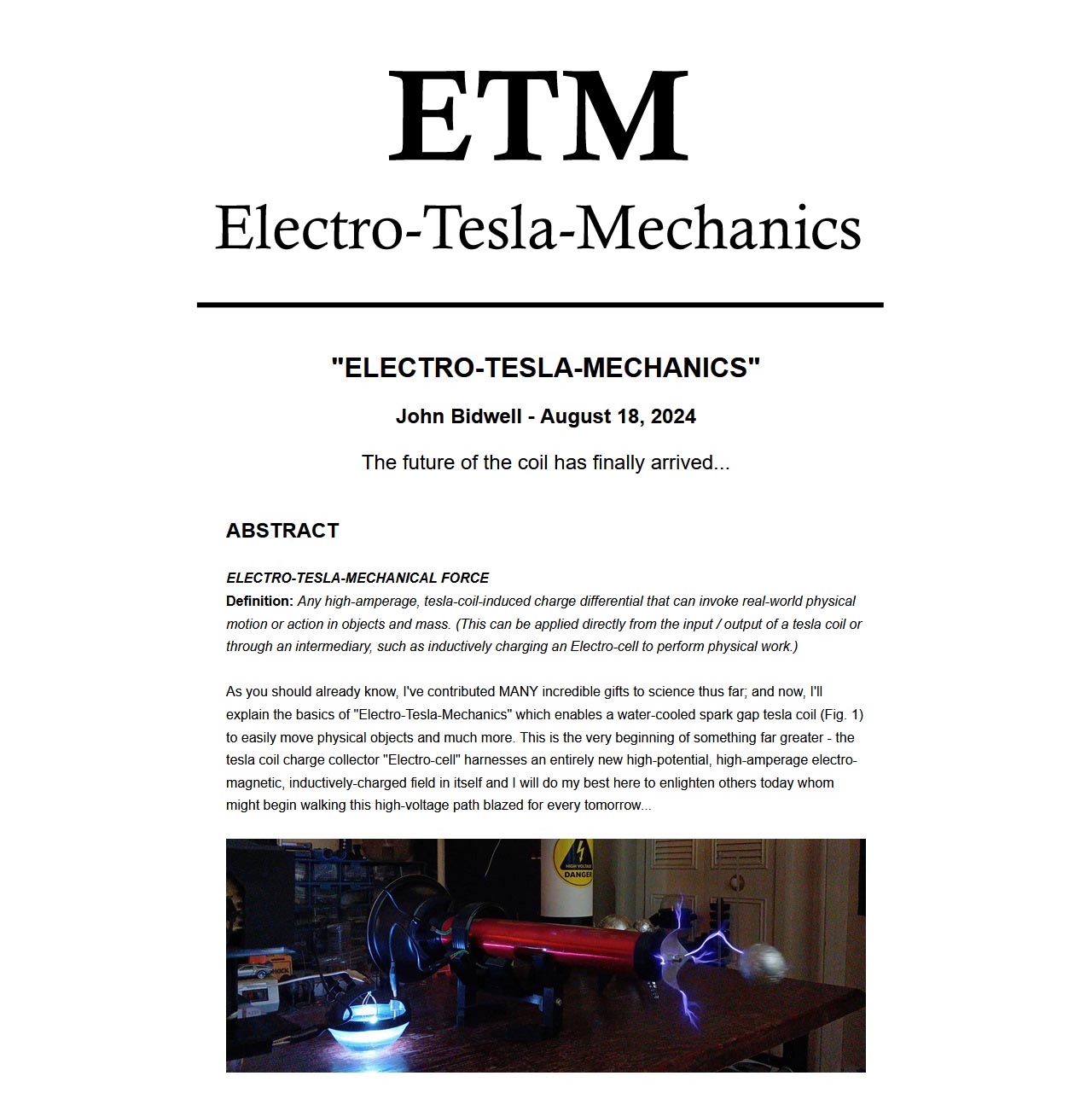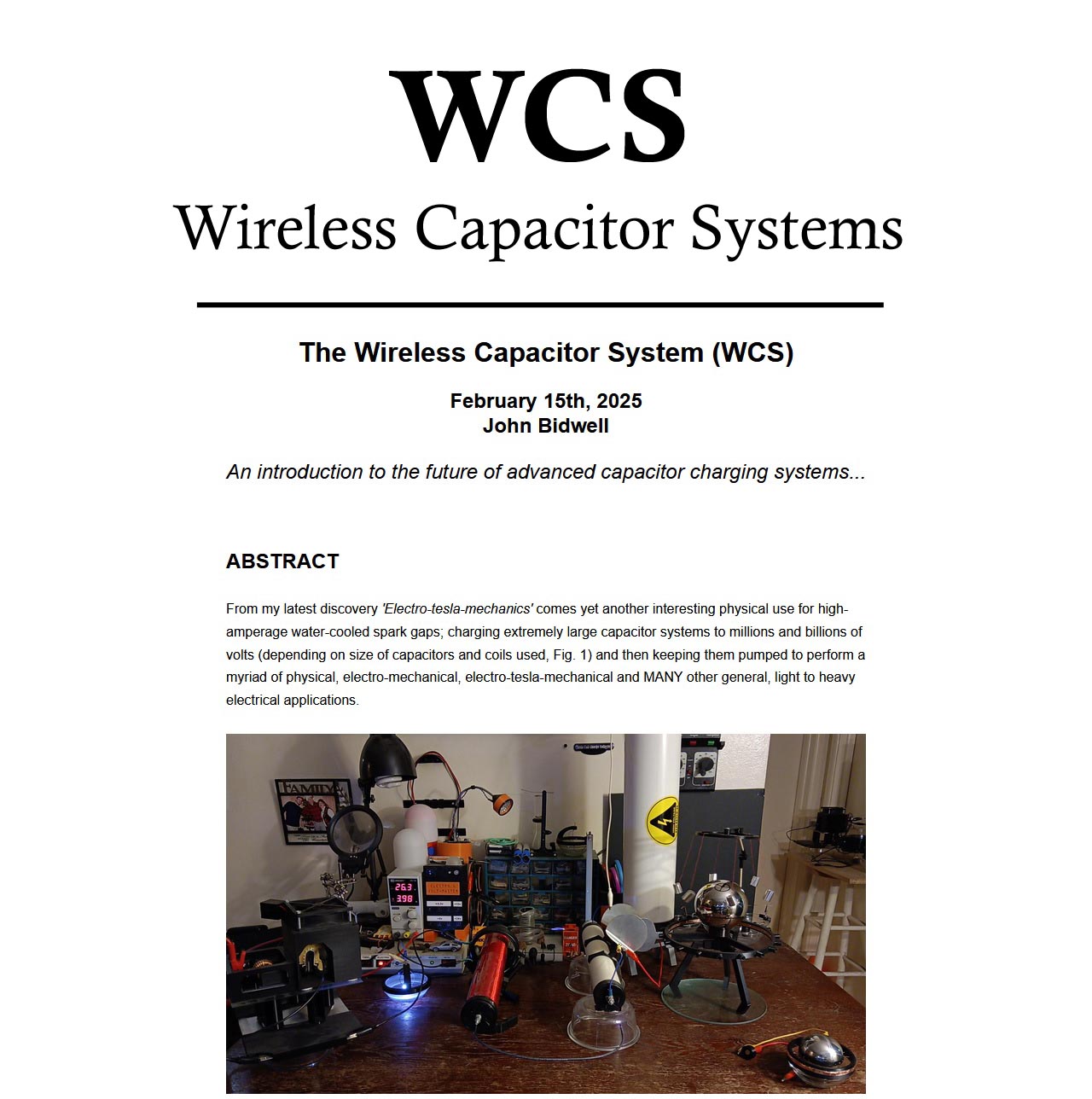how it works!
Water-cooled spark gap technology
By John Bidwell - June 22, 2023
The new science of water-cooled spark gaps are the next big steps for mankind.

ABSTRACT
I have discovered that there is an entire new field of science behind the methodology and implementation of a water-cooled spark gap - such as the right capacitance, electrode material, height of the protruding negative electrode from a water reservoir's surface and the distance to and angle from the positive electrode's separate configurations altogether. This will be the first paper in history detailing the functionality of a working WCSG (water-cooled spark gap) system and its basic components.
INTRODUCTION
After burning through countless electrodes and a beloved power supply, my dream of pushing huge arcs for scientific discovery had repeatedly melted. I tried different dielectric barriers and even a successful mineral oil spark gap, when after astutely observing the very nature of how electrons moved from one electrode to another, I uncovered the incredible, simple truth.
Others attempting this same objective in the past have mostly submerged 'both' electrodes into a liquid (greatly reducing dielectric efficiency and resulting in mess or failure), however there is in fact only one electrode that actually needs to be actively conditioned. So in understanding this, I quickly modified an air-cooled spark gap I've previously designed and filled the bottom with water, leaving about a centimeter of negative electrode poking up from the surface. Viola! The result was pure magic. I'd incredibly discovered the most effective / efficient way of applying active liquid cooling with a large unimpeded space for dielectric breakdown - and it was glowing marvelously mad "Fig. 1" on the workbench before me!

"Fig. 1"
Since that great day I have created a miniature, more experiment-friendly device "Fig. 2" that we will discuss here, although the overall operation between them are precisely the same.

"Fig. 2"
MATERIALS AND METHODS
The system is comprised of 3 main components.
Component overview "Fig. 3"
1) GFE (Ground Flow Emitter)
2) PFR (Positive Flow Receiver)
3) Water bowl / reservoir

"Fig. 3"
Electrode construction
I've learned positive electrodes function best when made from long copper wires or 'spoon-like' heat-sinks that allow for excess thermal evacuation. Negative, partially-submerged electrodes perform well (to date) when composed of simple steel wire.
Cooling medium
Any source of fresh water may be used as a cooling medium such as distilled, natural or tap - while even slightly contaminated or conductive water will still perform to specification without failure of the overall system.
Electrode angle
From trial and error I have found the most nominal position for a positive electrode is 30 degrees from the negative electrode's native angle "Fig. 3" and always points towards the negative electrode's tip.
Protrusion height
The negative electrode's protrusion height above the water's surface is scalable directly in relation to the circumference of the electrode itself, the material of the electrode, the voltage applied and the amount of current needed to facilitate water movement upwards for continual conditioning.
Capacitance
Lower capacitance is required for high amperage energy transfer, whereas higher capacitance applications function up until the point where current becomes so weak it can no longer draw fresh water up the electrode walls.
Priming the system
The system must first be primed "Fig. 4" by wetting the negative electrode down with water. If the electrode becomes dry or is too far above the water line during use, it will quickly ignite and melt.

"Fig. 4"
RESULTS
Under normal operation, current flow draws fresh water up the electrode walls "Fig. 5", continually cooling the system from the water reservoir itself. Although water draw is extremely slow, an optional gravity-fed tank can automatically replenish reservoir levels and keep the cooling system at specification for longer or indefinite run times.

"Fig. 5"
By actively cooling the negative electrode (GFE) with a thin, continual layer of water, temperatures stay well below the metal electrode's ignition point. A small amount of evaporation also helps cool the positive electrode (PFR) directly above. This thermal protection allows for a stable 1000% plus increase of high-amperage energy transfer between both electrodes and is quite unlike any other spark gap in existence.
DISCUSSION
If you can understand the technological heights we've achieved because of the first primitive spark gap made by Heinrich Hertz, then you can certainly imagine the limitless altitudes we will soar with this next generation of water-cooled spark gaps - safely delivering over one thousand times more power - continually, without ever overheating.
By implementing this technology, we can finally reach the greatest echelons awaiting in our society's high-voltage future. I am fully aware and so should you be, the importance that such a device like this has had and will have again as it directly starts to affect humanity's fast-moving, innovative advances on a truly global scale.
We now have the ability to experiment, build and create using high-voltage, high-amperage currents at unfathomably impressive levels without the greatest limitation once before of simple temperature failure. We are now able to reach the future, for the stars and whatever lies beyond...
Thanks everyone!

I would like to thank each of the great minds whom have inspired me from all generations before, and like them, I hope to have also inspired you and the many generations to come.
See you in the future!

"...always remember to discharge your capacitors!" - John Bidwell
Help support my research!
Great creativity can't be fully utilized without your much-needed support.
Make a donation today...
...watch what becomes of it tomorrow.






















 Welcome, to the future.
Welcome, to the future.








